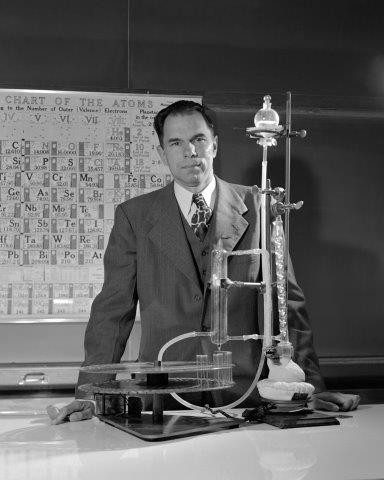FOR IMMEDIATE RELEASE | August 09, 2019
Element discoveries at Lawrence Berkeley National Lab honored at Landmark event
WASHINGTON, Aug. 9, 2019 — Lawrence Berkeley National Laboratory (Berkeley Lab), one of the most important locations in the world for discovering and synthesizing new chemical elements, will be honored at a National Historic Chemical Landmark ceremony on Aug. 11. The event will be held at 2 p.m. Pacific time at the Lawrence Hall of Science in Berkeley, California, as part of the American Chemical Society’s (ACS’) celebration of the International Year of the Periodic Table of Chemical Elements (IYPT).
This year marks the 150th anniversary of the publication of Dmitri Mendeleev’s periodic table. At the time he introduced his table, it featured many gaps for as-yet-unknown elements, which researchers gradually filled in during subsequent years. For many years, scientists were unable to discover any chemical element heavier than uranium, but Berkeley Lab scientists developed theories and techniques that enabled them to overcome this barrier.
“Beginning in 1940, scientists at the lab, including Glenn Seaborg and Albert Ghiorso, discovered or synthesized more than a dozen elements heavier than uranium,” says ACS President Bonnie Charpentier, Ph.D. The new elements included plutonium, berkelium, californium and lawrencium. The researchers’ achievements culminated in 1974 with the creation of element 106, which was named seaborgium. “Through this Landmark event, we pay tribute to their extraordinary vision and dedication,” Charpentier says.
“Berkeley Lab researchers’ production and discovery of new elements and isotopes has opened up new fields in medical imaging and treatments, and enabled a richer understanding of the fundamental properties of atomic nuclei,” says Berkeley Lab Director Michael Witherell, Ph.D. "We are honored to be recognized for our pioneering efforts in expanding the periodic table of elements and expanding our knowledge of these exotic elements. Our ongoing studies of these elements are still yielding new information and inspiring ideas for practical applications,” he added.
“The Lawrence Hall of Science is proud to be a part of this rededication,” says Hall Director Rena Dorph. “The Hall was named for Ernest O. Lawrence to honor his legacy and to celebrate the outstanding work of all the Berkeley scientists who contributed so much to our understanding of chemical elements.”
ACS first honored Berkeley Lab’s discovery of new chemical elements with a Landmark designation ceremony and installation of a bronze commemorative plaque at the lab on March 11, 2000. The rededication and installation of a plaque at Lawrence Hall of Science will make updated information about the discoveries accessible to the public.
ACS established the National Historic Chemical Landmarks program in 1992 to recognize seminal events in the history of chemistry and to increase awareness of the contributions of chemistry to society. Past Landmarks include the discovery and production of penicillin, the invention of synthetic plastics and the works of such notable scientific figures as educator George Washington Carver and environmentalist Rachel Carson. For more information, visit www.acs.org/landmarks.
The American Chemical Society, the world’s largest scientific society, is a not-for-profit organization chartered by the U.S. Congress. ACS is a global leader in providing access to chemistry-related information and research through its multiple databases, peer-reviewed journals and scientific conferences. ACS does not conduct research, but publishes and publicizes peer-reviewed scientific studies. Its main offices are in Washington, D.C., and Columbus, Ohio.
Lawrence Berkeley National Laboratory is a Department of Energy Office of Science facility managed by the University of California. The lab conducts unclassified research across a wide range of scientific disciplines.
The Lawrence Hall of Science — the public science center of the University of California, Berkeley — inspires and fosters science, technology, engineering and mathematics learning for all. Every year, programs and curricula developed by the Hall reach millions of students and educators around the globe, and over 200,000 visitors enjoy exhibits, planetarium programs and activities at the site.
Media Contact
ACS Newsroom
newsroom@acs.org






